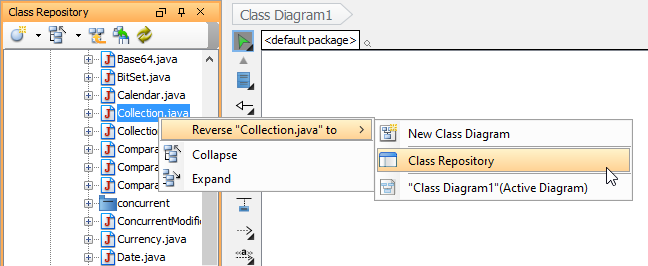Uml Tools Reverse Engineering
Reverse engineering is the process to reverse engineer from Java source. With reverse engineering, you can visualize your program or system with class diagram. Before reverse engineering, you must open the UML project from the Java project. Project Based Reverse EngineeringYou can produce and update UML models from all source files in a Java project. Models of the selected project, child packages and classes will be created (if the models are not already exists) or updated. To reverse engineer from an project, right-click on the project node in NetBeans and select Update UML Model from the popup menu.Package Based Reverse EngineeringYou can produce and update UML models from source files under a package.
Free Uml Tools Reverse Engineering C++

Models of the selected package, child packages and classes will be created (if the models are not already exists) or updated. To reverse engineer from a package in a Java project, right-click on the package in any tree and select Tools Visual Paradigm EE Update UML Model from the popup menu.Class Based Reverse EngineeringYou can produce and update UML models from classes in NetBeans. Models of the selected class and child classes (inner class) will be created (if the models are not already exists) or updated. To reverse engineer code from a class in a Java project, right-click on the class file in any tree or in code editor and select Update UML Model from the popup menu.
BOUML - Free Unified Modeling Language (UML) & Code Generation ToolFranco Martinig, Methods & ToolsBOUML is a free Unified Modeling Language (UML) and code generation tool that run under Windows, Linux and MacOS X. It provides a modeler that includes UML diagrams like use case, class, sequence, communication.BOUML also allows to generate code in C, Java, Idl, PHP, Python and MySQL or import the code into diagrams. It is actively maintained and version 7.7.1 presented here was released in July 2018.Web Site:Version presented: BOUML 7.7.1 on Window 8 in September 2018System requirements: BOUML runs under Windows, Linux and MacOS X.License & Pricing: FreewareSupport: support forums on InstallationBesides that Windows was worried about installing a program from an unknown editor, the installation was as simple as running the setup program. Three icons are created on the desktop: BOUML, projectControl, and projectSynchro. These two tools are used for code generators/reverse/roundtrip features.DocumentationDocumentation is available online on the tool website and also as a large PDF file (470 pages in A4 format) that was last updated in June 2018.
Some videos are also available on YouTube.Working with BOUMLThe BOUML screen is divided in three parts:. the left window lists the content of your project in a tree structure. the upper right window contains your diagram. the bottom right window displays the information linked to item of the upper window(click on figure to enlarge)Using the tree structure of your project, you can add items or work on them simply by right-clicking on a selected item. The menu is always adapted to your context.
The usage of the modeling tools is fairly intuitive. When your mouse point on a diagram component, a popup windows appear with its name. It is easy to add new items on a diagram and to define and describe them in specific dialog boxes.BOUML supports the following diagram types. Use Case Diagram. Class Diagram. Sequence Diagram.
Communication Diagram. Object Diagram.

Deployment Diagram. Collaboration Diagram. Activity DiagramCode generationBOUML also allows to generate code in C, Java, Idl, PHP, Python and MySQL. The target language is defined at the package level. The code generation settings are defined at the project level. Additional code generation information can be added during the diagramming activity depending of the context and the target language. The documentation provides extensive material on how to setup the different items for code generation.
Some plug-outs allow to either do roundtrip engineering (import code and apply changes) or reverse engineering (import code only). The documentation explains how these plug-outs work for the different languages supported by BOUML.(click on figure to enlarge)Open architectureBOUML has an open architecture. Its features can be expanded by writing external tools named plug-outs using the C or Java languages. A tutorial for writing plug-outs is available on the website.ConclusionEven if UML modeling and model-driven software development is currently not well-considered in a software development world influenced by Agile approaches, these practices are still useful for requirement engineering. BOUML is one of the rare free UML tool available that has the benefits of being actively maintained and having been commercially tested. Besides modeling, it provides many code generations features that are useful if you want to use the results of your modeling efforts in later phases of the software development life cycle.Related Resources.This article was originally published in September 2018.